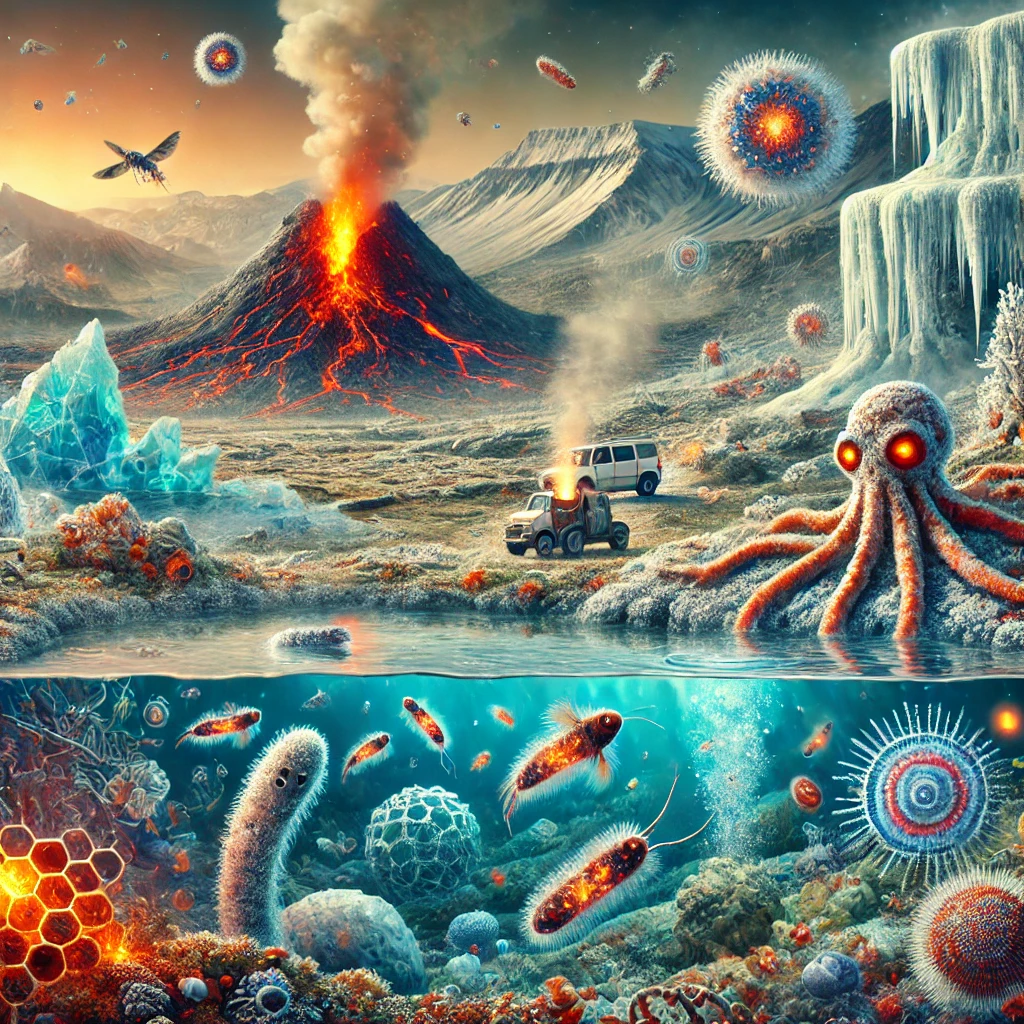Where Do Extreme Life Forms Exist?
Article Source

Why you should care
Extremophiles are incredible organisms that thrive in extreme environments where most life cannot survive. These environments include hot springs, deep ocean vents, and acidic lakes. Understanding extremophiles helps scientists learn about life on Earth and the possibility of life on other planets, like Mars or Europa. Their unique adaptations can even lead to breakthroughs in medicine and biotechnology.
Answering the question… Where Do Extreme Life Forms Exist?
Extremophiles live in some of the harshest conditions on Earth. They can be found in places with extreme temperatures, high salinity, or high acidity. For example, some thermophiles thrive at temperatures above 100°C (212°F) in boiling hot springs, while halophiles live in salt lakes with salt concentrations up to 10 times greater than seawater.
How was the study done?
Researchers conducted studies in various extreme environments to observe extremophiles in their natural habitats. They collected samples from hot springs, deep-sea vents, and hypersaline lakes. Using advanced techniques like DNA sequencing and microscopy, scientists identified and classified different types of extremophiles, exploring their unique adaptations.
What was discovered?
- Diverse Habitats: Extremophiles inhabit extreme environments such as:
- Hot springs reaching 100°C or more.
- Salt lakes with up to 10 times the salinity of the ocean.
- Deep-sea hydrothermal vents with pressures exceeding 200 times that of sea level.
- Unique Adaptations: Some extremophiles possess proteins that remain stable at extreme temperatures, making them valuable for industrial applications.
- Biotechnology Potential: The enzymes from extremophiles are being used in various industries, such as food processing and biofuels, because they can function in harsh conditions.
- Life Beyond Earth: Studying extremophiles provides clues about how life might exist on other planets, suggesting that life could thrive in similar extreme environments.
Why does it matter?
Understanding extremophiles helps scientists explore the limits of life on Earth and the potential for extraterrestrial life. Their unique adaptations can lead to innovations in biotechnology, environmental science, and even medicine. By studying these remarkable organisms, we gain insight into the resilience of life and the possibilities of survival in extreme conditions.
